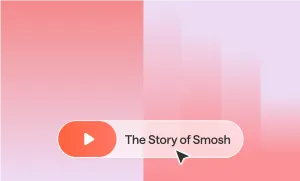Filthy Frank. Joji. George Miller. He’s a man of many names! And skills, it turns out. Whether you know George Miller as FilthyFrank or Jiji will depend on your interests and where you first discovered the YouTuber-turned-musician.
Miller’s story is interesting because, at just 30 years old, the Japanese singer has already enjoyed success in multiple areas that could not be more different from one another, transitioning from an online content creator focusing on pushing ‘edgy’ humor to a well-respected and chart-topping artist.
Without further ado, let’s explore how Miller went from Filthy Frank to Joji in what has to be YouTube’s most incredible rebrand.
The crazy (yet true) story of Joji
If you were obsessed with YouTube in the early 2010s (who among us wasn’t?), you’ll know it was rife with the boundary-pushing comedy that defined our senses of humor at the time.
Miller was one such comedian; in 2011, he created the character Filthy Frank, who was equal parts hilarious and downright offensive. Miller perfected the art of ‘edgy’ humor, drawing in a huge following of young, meme-centric viewers who wanted to know what Frank would do next.
For over half a decade, Miller poured everything into the Filthy Frank Show and won a huge following as a result. The channel still has over 7M followers on YouTube despite going inactive seven years ago.
In 2017, Miller made an announcement that shocked his audience: he’d no longer be producing Filthy Frank content because playing the character was affecting his ‘serious health condition.’ At this point, he’d been releasing music for several years under the name Pink Guy, a brand that was closely associated with Filthy Frank—this identity was shredded, too, and replaced by his new alias: Joji.
As Joji, Miller quickly found success, adopting an alternative music style that was aimed at a more mature, mainstream audience. His debut album, Ballads 1, peaked at number 1 on the US Top R&B/Hip-Hop Albums chart, and his most recent release, 2022’s Smithereens, reached number 5 on the US Billboard 200, cementing Joji in the music mainstream.
The pros and cons of rebranding
We don’t need to tell you that rebranding is a risky move. Even for a YouTuber with a built-in audience, there’s no guarantee that they’ll follow you into your next venture — especially when you’re making as dramatic a shift as Miller’s.
Yet, in many ways, the benefits outweigh the risks:
- Pursuing your true passions: By shedding the Filthy Frank persona, Miller could create art he truly cared about while stopping creating the content that was damaging his health.
- Connecting with a wider audience: Adopting a more mainstream approach opened Miller up to a larger audience.
- Entering a new industry: Miller never would have been taken seriously as Filthy Frank. His rebrand meant becoming the serious music artist he’d always wanted to be.
However, we can’t overlook the cons:
- Losing your progress: Miller had already carved out a space for himself on YouTube, which he was giving up.
- Failing to break through: Stepping into the highly competitive music industry was a massive gamble, especially as his online history could easily have become a hindrance.
- Alienating your fanbase: By moving away from Filthy Frank, Miller risked alienating his fanbase; while they’d been loyal to the Filthy Frank brand, there was no guarantee they’d be interested in his new music.
How Joji kept his audience
Yet, despite the odds, Miller succeeds in his transformation from Filthy Frank to Joji. And he even retained a huge percentage of his original fanbase, all while drawing in a new audience. This is no easy feat, considering the stark contrast between the two personas. Here’s how he did it:
1) His rebrand was rooted in authenticity
Despite the obvious challenges, Miller's rebranding was successful because it was rooted in an authentic love for music. This authenticity helped him maintain credibility and allowed his fans to grow with him rather than feeling left behind.
2) He transitioned gradually
Instead of trying to erase his past, Miller used it as a foundation to build something new. He introduced audiences to his music through Pink Guy, hinting at his upcoming change in direction; this gradual shift helped ease fans into the new persona, making the transition less jarring.
3) He was honest
Miller was always transparent about why he was moving on from Filthy Frank, openly discussing the toll the channel was taking on his health. This earned his audience’s respect and understanding, increasing their chances of sticking with him.
What can we learn from Joji?
Thankfully, Miller’s success as Joji proves that rebranding successfully is possible, even with a wild digital footprint to your name. Yet, you can’t rebrand overnight like a snake shedding its skin. A successful rebrand takes time and careful planning.
For Miller, this meant being honest about his reasons for change, introducing his new persona slowly, and staying true to his passions.
If you’re a creator looking to rebrand, remember this: it’s possible to navigate such a transition successfully if you remain authentic, transparent, and committed to your vision.








